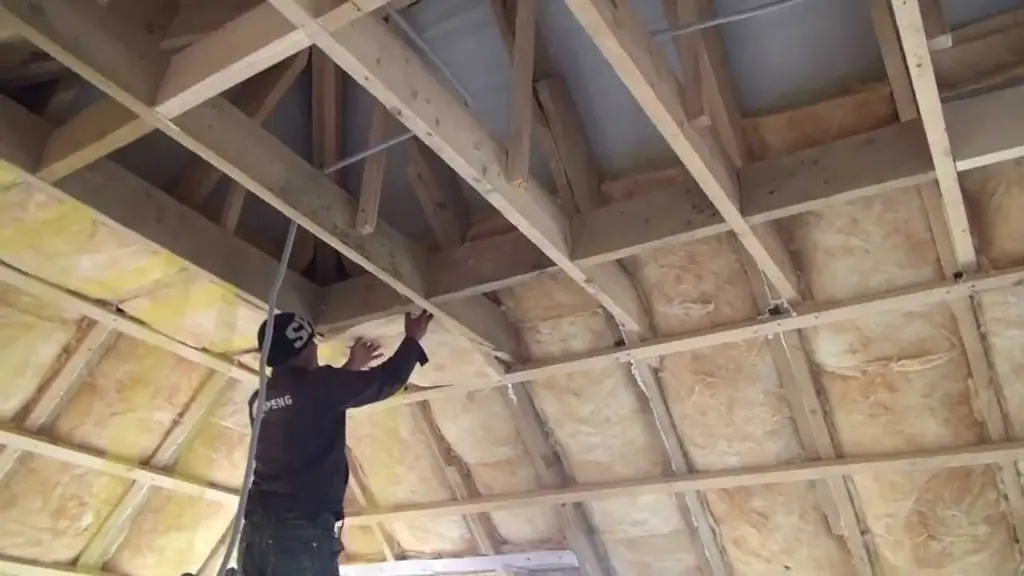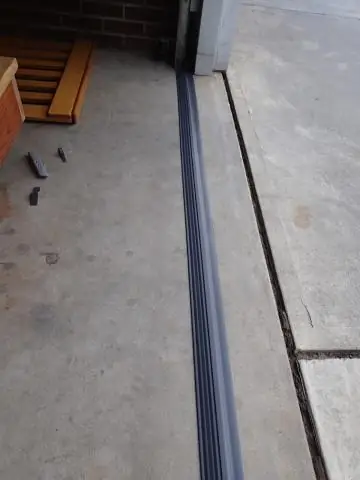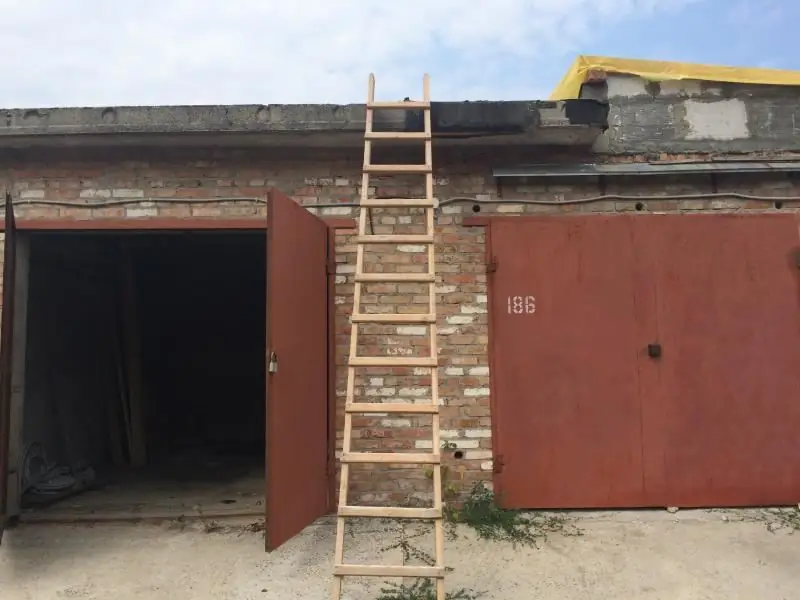
Table of contents:
- Author Bailey Albertson [email protected].
- Public 2023-12-17 12:53.
- Last modified 2025-06-01 07:32.
How to insulate an attic from the inside with your own hands

Each room of a private house needs to be insulated, especially if it is under a roof. If you neglect this or violate the technology of insulation, then in the cold season the wind will blow into all the cracks, as a result of which condensation will accumulate on the rafters and the ceiling, which will definitely lead to rotting of the wooden parts of the roof. That is why you need to foresee all the nuances in advance and properly insulate the attic space.
Content
-
1 How to insulate the attic roof from the inside
1.1 Video: foam or mineral wool - what to choose
-
2 Basic rules for insulating the attic from the inside
2.1 Methods of insulation
-
3 Insulation of the attic from the inside with your own hands in stages
- 3.1 Materials and tools
-
3.2 Roof insulation
3.2.1 Video: how to insulate the attic roof from the inside
- 3.3 Insulation of floors
- 3.4 Insulation of gables
- 3.5 Insulation of partitions
- 3.6 Video: foam insulation
- 4 Reviews of different types of insulation
How to insulate the roof of the attic from the inside
The range of thermal insulation materials is so large that it is quite difficult to immediately determine the choice of insulation suitable for the attic.
-
Fiberglass material is the cheapest, but still has many advantages. For example, it is non-flammable, non-toxic, adheres well to other materials and retains heat. The operational properties are retained only if the installation technology is fully observed. But fiberglass also has disadvantages. This material does not emit harmful substances, but fine dust from fragments of fiberglass can appear in the room. Contact with such dust can cause skin problems, it will start to itch, which can cause scratches that will not heal for a long time. Therefore, it is very important to use a respirator while working with the material and carefully observe safety precautions. Also, fiberglass is difficult to lay on walls that are at an angle, which means that when insulating the attic, difficulties can arise.

Fiberglass Fiberglass insulation can cause permanent discomfort
-
Mineral wool is a natural insulation with the addition of synthetic fibers that increase its performance. Its main advantages are lightness, environmental safety, soundproofing properties. Therefore, such material is almost ideal for insulating the attic. It can be produced both in the form of slabs and in rolls. For insulation of the attic, it is more convenient to use the first option.

Mineral wool Mineral wool is considered to be a good insulation material due to its fire resistance.
-
Polyfoam is a material that perfectly combines good thermal insulation properties with a low price and ease of installation. This material will slightly weigh down the attic structure and practically does not require special skills for laying. However, the foam is unable to pass steam. There is also another significant drawback - mice love it.

Styrofoam Styrofoam may appeal to mice
-
Polyurethane foam. A unique insulation with a liquid structure. A special spray device is used for application. After that, the polyurethane foam hardens and forms a monolithic coating without seams, which means that the presence of cold bridges is excluded.

Polyurethane foam Polyurethane foam initially has a liquid structure
-
Foil materials perform several functions at once: insulation and mirror reflection, which does not allow heat to go outside. This is possible only if the material is laid with an aluminum layer inside the attic. It is also necessary to leave a gap of 5 cm between the insulation and the vapor barrier layer.

Foil insulation Foil insulation performs several functions at once
Video: foam or mineral wool - what to choose
Basic rules for insulating the attic from the inside
Warming the attic from the inside implies the arrangement of a constructive cake. It has a certain scheme, which is not recommended to deviate from:
- Plasterboard cladding.
-
Vapor barrier. The use of a membrane is recommended. The vapor barrier layer is a coating created from a roll of material with an overlap of 10 cm. The canvases must be fastened along vertical and horizontal joints using a special adhesive tape.

Vapor barrier film Vapor barrier prevents condensation
- Sheathing. It performs three functions at once: it holds the heat-insulating material, is the basis for the vapor barrier layer, and forms a ventilation space (which is not always needed, this is mainly needed when using foil insulation).
-
Heat insulating layer. Can be stacked in several layers if necessary. When insulating the attic from the inside, the insulation is placed in the space between the rafters.

Insulation between the rafters Most often, the insulation fits into the space between the rafters
- Waterproofing layer. It is necessary to protect the insulation from getting wet. If you neglect this rule, the thermal insulation layer will lose its performance properties. It is recommended to leave a ventilation gap between the insulation and the waterproofing so that condensation does not form inside the cake.
- A counter grill is required to provide a ventilation gap. Additionally, you need to make holes in the area of the base of the slopes and valleys. The width of the ventilation gap depends entirely on the roofing material used. When covered with slate or other similar material, this parameter is 25 mm, when installing flat material - 50 mm.
-
Wind isolation. This layer has a windproof function, it retains heat during excessive ventilation in the ventilation gap. Wind insulation is laid over the rafters, fixed with slats. After laying the material, they carry out finishing work on the arrangement of the roof.

Attic insulation cake from the inside When insulating the attic, it is important to observe a certain sequence of layers.
Warming methods
Insulation of the attic from the inside can be done in several ways:
-
Installation of insulation between the rafters. This method is considered the simplest, therefore, when insulating with your own hands, it can be safely applied. There are certain rules that must be followed in this case. First of all, this concerns the presence of a ventilation gap, which must necessarily be between the hydro- and heat-insulating layers. This will prevent condensation from building up. It is also recommended to carefully monitor the thickness of the insulation. It must fully match the thickness of the rafters. That is why mineral wool is most often chosen when choosing this method of insulation.

Worker lays down insulation The dimensions of the insulation board must be larger than the dimensions of the space between the rafters
- Complex insulation. In this case, several types of heat-insulating material are used at once, which have hydraulic properties. However, there is a risk of condensation accumulation as there is no ventilation gap and the ceiling height is reduced.
-
Installation of insulation over the rafters. This method allows you to save usable space. The rafters themselves can play the role of interior decor. When insulating, it is very important to equip a hydro and vapor barrier layer.

Insulated attic with rafters Rafters can be part of the interior decor
Do-it-yourself attic insulation from the inside in stages
The peculiarity of the attic is that this attic floor is almost entirely formed by the roof surface. It is an inclined part of the rafter system, which needs insulation. Additionally, you can insulate the floor of the attic.
Materials and tools
Most often, mineral wool is used to insulate the attic from the inside, so a list of tools and materials will be given accordingly. For insulation you need:
- a hammer for aligning individual pieces of insulation from the inside;
- mallet;
-
bit;

Bit The chisel is needed for working with wood
- chisel;
- nails and screws for use during woodwork;
- plane;
- ax;
-
sherhebel;

Scherhebel Scherhebel will make the surface of the rafters perfectly flat
- protective equipment such as gloves, a suit and a face mask.
You will also need the following materials:
- the insulation itself is mineral wool, which is recommended to be cut into suitable pieces in advance;
- wooden counter-rails.
Roof insulation
The attic slopes are sloped, which means that to insulate them, you need to use a material that does not deform over time. It is also recommended to take not a continuous sheet of insulation, but its pieces. This will allow the material to fit tightly between the rafters, and it will not sag under its own weight. The whole process of roof insulation is as follows:
-
Cut the rock wool into pieces that are slightly larger than the space between the rafters.

Mineral wool slabs Mineral wool must be cut into sheets of suitable size for installation
-
Place the insulation between the rafters, in addition, you can lay it under the rafter legs and on them.

Mineral wool between the rafters You can stack material between or under the rafters
- Fill the gaps with heat-insulating material as well. To do this, cut a strip 2-2.5 cm larger than the gap from the roll of mineral wool under the ruler. Drive the resulting piece of material with force into the slot.
- In the place where the roof changes its plane, it is very important to correctly join the pieces of insulation. First of all, this concerns the ridge and the junction of the roof with the wall.
-
The insulation must be covered with a vapor barrier membrane that overlaps and is fastened with brackets.

Installation of a vapor barrier membrane The vapor barrier membrane is overlapped
Video: how to insulate the attic roof from the inside
youtube.com/watch?v=7b1TgA4Zl2U
Insulation of floors
During the construction of a private house, equipped with an attic, one of three types of overlap is used. That is why there are three ways to insulate them:
- The wall is made of reinforced concrete, and the floor is a self-leveling or concrete slab. In this case, the use of a particularly durable insulation is required. In addition to insulation, this material must absorb noise. Styrofoam copes with this ideally.
- Reinforced concrete wall and wooden floor. As a heater, you can use a material based on basalt fibers. In this case, it is necessary to leave ventilation gaps. Sound insulation can be increased by installing special gaskets made of special material.
-
Timber floors require insulation over the beams and sub-floor. With this method of insulation, a waterproofing layer must be present.

Thermal insulation of wooden floors with mineral wool When insulating a wooden floor, a waterproofing layer is required
Warming of gables
The method of insulation depends on the structure of the building:
-
In the event that layered masonry was used for the construction of the house, then the insulation is mounted between the layers. Basalt wool, which is produced in the form of slabs, is ideal for this.

Warming of the attic pediment The principle of attic gables insulation is the same as roof insulation
- If plaster is used as a decoration, then foam plastic or tiled stone wool can be used for insulation. But it is very important to ensure the tightness of the thermal insulation layer and geometric stability.
Insulation of partitions
To isolate the attic partitions of a private house, it is better to choose mineral wool slabs. This is due to the fact that you cannot make the structure heavier, and it is also recommended to ensure its fire resistance. To insulate partitions, you need:
- Equip the partitions themselves using guide profiles. The latter play the role of load-bearing elements of sheathing and insulation.
-
Lay the mineral wool slabs along these guides or rails. This will allow soundproofing partitions, which is very appropriate if there are several rooms in the attic.

Insulation of attic partitions When arranging rooms in the attic space, each of the partitions is additionally insulated with mineral wool
- For better sound absorption, additionally lay a special noise-insulating material in the gap between the partitions and the floor.
Video: foam insulation
Reviews of various types of insulation
It is not difficult to insulate the attic from the inside with your own hands. The main thing is to choose the right insulation, the method of laying it and carefully observe the installation technology.
Recommended:
How And How To Insulate The Garage From The Inside With Your Own Hands - Instructions With Photos And Videos

Self-insulation of the garage. Insulation selection, material calculation and process description
How To Make A Chimney In A Bath With Your Own Hands: Scheme, Device And Calculation, Output Through The Ceiling, Insulation, Step-by-step Guide With Photos And Videos

The chimney in the bath: what is it, why is it needed, what kind of structure it has and how it is made by hand
How And How To Insulate The Ceiling In The Bath With Your Own Hands Outside And Inside

Insulation of the ceiling in the bath outside and inside. The materials used, the methods used, their advantages and disadvantages. Step by step description of the process
Making Metal Doors With Your Own Hands: Technology, Drawings, Equipment, As Well As How To Make Heat And Noise Insulation Correctly

Metal door manufacturing technology. Tools and equipment for self-production of metal doors. Warming and finishing
How To Repair A Garage Roof, Including With Your Own Hands, How To Fix A Leak From The Inside

How to fix leaks and other defects in different types of garage roofs. What materials are needed for repairs and how to use them correctly
